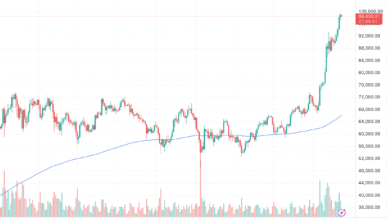
Bitcoin Futures Expiration Dates Calendar 2025 Complete Trading Guide
The Bitcoin futures expiration dates calendar is crucial for any serious cryptocurrency trader looking to maximize profits and minimize risks. Whether you’re a seasoned professional or just entering the world of crypto derivatives, knowing when Bitcoin futures contracts expire can significantly impact your trading strategy and portfolio performance.
The Bitcoin futures market has evolved tremendously since its inception, with major exchanges like CME Group, Bakkt, and various cryptocurrency platforms offering different contract specifications and expiration schedules. This comprehensive guide will walk you through everything you need to know about Bitcoin futures expiration dates, helping you navigate the complex world of cryptocurrency derivatives trading with confidence and precision.
What Are Bitcoin Futures and Why Do Expiration Dates Matter
Bitcoin futures are standardized financial contracts that obligate the buyer to purchase Bitcoin at a predetermined price on a specific future date. These derivative instruments allow traders to speculate on Bitcoin’s price movements without actually owning the underlying cryptocurrency.
The expiration date represents the final day when the futures contract remains active. After this date, the contract is settled either through physical delivery of Bitcoin or cash settlement, depending on the contract specifications. Understanding these dates is essential because they create significant market volatility and trading opportunities.
Key Benefits of Tracking Expiration Dates
Monitoring Bitcoin futures expiration dates provides several strategic advantages for traders. First, it helps identify potential price volatility periods, as large contract settlements can cause substantial market movements. Second, it enables better timing for entry and exit positions, allowing traders to capitalize on pre-expiration price swings.
Additionally, understanding expiration patterns helps traders avoid unexpected position closures and manage risk more effectively. Many successful traders use expiration calendars to plan their trading strategies weeks or months in advance, positioning themselves to benefit from predictable market dynamics.
Bitcoin Futures Expiration Dates Calendar 2025 Complete Schedule
The Bitcoin futures market operates on various expiration schedules depending on the exchange and contract type. Here’s a comprehensive breakdown of the major Bitcoin futures expiration dates for 2025:
CME Bitcoin Futures Expiration Dates
CME Group, one of the world’s largest derivatives exchanges, offers monthly Bitcoin futures contracts that expire on the last Friday of each contract month. If the last Friday falls on a holiday, the contract expires on the preceding business day.
2025 CME Bitcoin Futures Expiration Schedule:
- January 31, 2025 (Friday)
- February 28, 2025 (Friday)
- March 28, 2025 (Friday)
- April 25, 2025 (Friday)
- May 30, 2025 (Friday)
- June 27, 2025 (Friday)
- July 25, 2025 (Friday)
- August 29, 2025 (Friday)
- September 26, 2025 (Friday)
- October 31, 2025 (Friday)
- November 28, 2025 (Friday)
- December 26, 2025 (Friday)
Bakkt Bitcoin Futures Calendar
Bakkt offers physically-settled Bitcoin futures with monthly expiration cycles. These contracts typically expire on the second Friday of each month, providing an alternative schedule to CME contracts.
Cryptocurrency Exchange Futures
Major cryptocurrency exchanges like Binance, BitMEX, and Deribit offer various futures products with different expiration schedules, including perpetual contracts that don’t have traditional expiration dates but use funding mechanisms instead.
How Bitcoin Futures Expiration Affects Market Volatility

The relationship between Bitcoin futures expiration dates and market volatility is well-documented and provides valuable insights for traders. Historical data shows that Bitcoin’s price often experiences increased volatility in the days leading up to major futures expiration events.
Pre-Expiration Market Dynamics
In the 48-72 hours before major futures expirations, trading volume typically increases as institutional traders adjust their positions. This activity can create significant price swings, presenting both opportunities and risks for active traders.
Large institutional players often engage in “max pain” strategies, attempting to push Bitcoin’s price toward levels that maximize losses for retail options holders. Understanding these dynamics helps individual traders position themselves advantageously or avoid potential pitfalls.
Settlement Impact on Price Discovery
The settlement process itself can create temporary price distortions, especially when large open interest positions need to be closed. Cash-settled contracts use reference prices from spot exchanges, which can create arbitrage opportunities between futures and spot markets. Physical settlement contracts, like those offered by Bakkt, can impact actual Bitcoin supply and demand dynamics, potentially creating more sustained price movements compared to cash-settled alternatives.
Strategic Trading Around Bitcoin Futures Expiration
Successful trading around Bitcoin futures expiration requires careful planning and risk management. Here are proven strategies that experienced traders use to capitalize on expiration-related market movements:
The Expiration Week Strategy
Many traders focus their attention on the week leading up to major futures expirations, particularly CME contracts, due to their significant market influence. This strategy involves analyzing open interest data, monitoring institutional positioning, and identifying potential support and resistance levels.
The key is to enter positions early in the expiration week and exit before the actual settlement to avoid unexpected volatility spikes. This approach requires discipline and strict risk management, as expiration-related moves can be unpredictable.
Volatility Arbitrage Opportunities
Expiration periods often create temporary pricing inefficiencies between different Bitcoin trading venues. Sophisticated traders use these discrepancies to profit from convergence trades, simultaneously buying undervalued contracts and selling overvalued ones.
This strategy requires access to multiple trading platforms and sufficient capital to manage the associated risks. However, when executed properly, volatility arbitrage can provide consistent returns with relatively low market exposure.
Long-Term Position Management
For investors holding long-term Bitcoin positions, futures expiration dates serve as natural portfolio review points. Many institutional investors use these dates to rebalance their cryptocurrency allocations and adjust hedge ratios. Understanding the expiration calendar helps long-term investors time their entries and exits more effectively, potentially improving overall portfolio performance through better execution timing.
Tools and Resources for Tracking Expiration Dates
Staying informed about Bitcoin futures expiration dates requires access to reliable tools and resources. Here are the most valuable platforms for tracking this critical information:
Professional Trading Platforms
Most professional trading platforms include futures expiration calendars as standard features. Platforms like TradingView, Bloomberg Terminal, and Thomson Reuters provide comprehensive coverage of Bitcoin futures across multiple exchanges. These platforms often include additional features like open interest tracking, volume analysis, and historical expiration impact studies that enhance trading decision-making capabilities.
Exchange-Specific Resources
Each major futures exchange maintains detailed contract specifications and expiration schedules on its website. CME Group, for example, provides comprehensive documentation about its Bitcoin futures products, including settlement procedures and calendar information. Staying connected with official exchange communications ensures traders receive timely updates about any schedule changes or special circumstances that might affect contract expirations.
Third-Party Analytics Services
Specialized cryptocurrency analytics services like Glassnode, CryptoQuant, and Skew provide detailed insights into Bitcoin futures markets, including expiration tracking and impact analysis. These services often offer premium features like expiration-based alerts, historical correlation studies, and institutional flow analysis that can significantly enhance trading strategies.
Risk Management During Expiration Periods
Managing risk around Bitcoin futures expiration requires special attention to several key factors that can significantly impact trading outcomes:
Position Sizing Considerations
The increased volatility around expiration dates necessitates more conservative position sizing compared to normal market conditions. Many experienced traders reduce their position sizes by 25-50% during expiration weeks to account for unexpected price movements. This conservative approach helps preserve capital during periods of heightened uncertainty while still allowing participation in potential profitable moves.
Stop-Loss Strategy Adjustments
Traditional stop-loss strategies may prove inadequate during expiration periods due to increased gap risk and volatility spikes. Many traders widen their stop-loss levels or use time-based exits instead of price-based stops during these periods. Alternative risk management approaches include using options strategies to hedge positions or employing dynamic stop-loss levels that adjust based on realized volatility measurements.
Liquidity Considerations
Market liquidity can decrease significantly during major expiration events, particularly in the hours immediately surrounding settlement. Traders must account for potentially wider bid-ask spreads and reduced market depth when planning their exit strategies. Planning exit strategies well in advance of expiration helps ensure adequate liquidity for position closure without significant slippage costs.
The Future of Bitcoin Futures Expiration Patterns

The Bitcoin futures market continues to evolve, with new products and expiration structures regularly introduced by exchanges worldwide. Understanding these trends helps traders prepare for future market developments:
Regulatory Developments
Increasing regulatory clarity around cryptocurrency derivatives is likely to attract more institutional participation, potentially changing traditional expiration patterns and market dynamics. The approval of Bitcoin ETFs and other regulated products may influence how futures markets behave around expiration dates.
Market Maturation Effects
As the Bitcoin futures market matures, expiration-related volatility may decrease as more sophisticated participants enter the market. However, the fundamental relationship between large contract settlements and price volatility is likely to persist.
Technology Integration
Advanced trading algorithms and artificial intelligence systems are increasingly used to trade around futures expirations. This technological evolution may create new patterns and opportunities for human traders who understand these systems’ behavior.
International Bitcoin Futures Markets
While CME Group dominates institutional Bitcoin futures trading, international exchanges offer alternative products with different expiration schedules:
European Futures Markets
European exchanges like Eurex are developing Bitcoin futures products that cater to local trading hours and regulatory requirements. These products may follow different expiration patterns that create additional opportunities for global traders.
Also Read: Bitcoin Futures Expiration Dates Calendar 2025 Complete Trading Guide
Asian Market Developments
Asian exchanges, particularly those in Singapore and Hong Kong, are launching regulated Bitcoin futures products that serve institutional clients in the Asia-Pacific region. Understanding these different time zones and expiration schedules becomes increasingly important for global traders.
Conclusion
Mastering the Bitcoin futures expiration dates calendar is essential for successful cryptocurrency derivatives trading. By understanding expiration schedules, market dynamics, and strategic opportunities, traders can significantly improve their performance and risk management capabilities.
The key to success lies in consistent monitoring, proper preparation, and disciplined execution around these critical dates. Whether you’re using expiration periods for volatility trading, portfolio rebalancing, or risk management, having a comprehensive understanding of the Bitcoin futures expiration dates calendar gives you a significant competitive advantage in the dynamic cryptocurrency markets.







